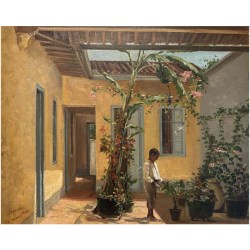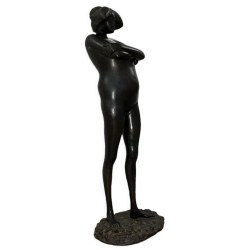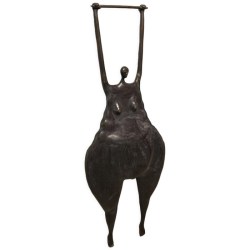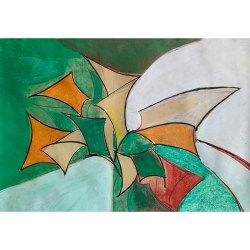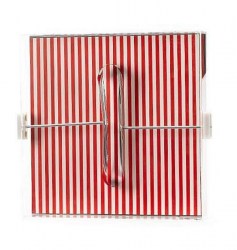Bio
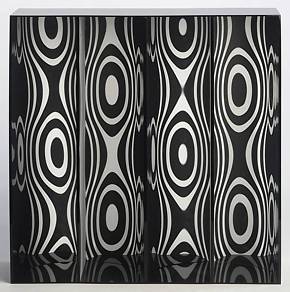 Born in the town of San Martin ( Mendoza ) precisely in the town of Palmyra in 1928. During the year 1942 he moved with his family to the city of Buenos Aires, in 1943 he joined the National School of Fine Arts Prilidiano Pueyrredón although he left the following year , in the meantime could see the murals that Antonio Berni , Juan Carlos Castagnino Manuel Colmeiro Guimaraes , Lino Enea Spilimbergo and Demetrio Urruchúa performed for Pacific Galleries downtown of the city of Buenos Aires , on the petition of such murals came to the intuition of the importance of the " spectator ".
Born in the town of San Martin ( Mendoza ) precisely in the town of Palmyra in 1928. During the year 1942 he moved with his family to the city of Buenos Aires, in 1943 he joined the National School of Fine Arts Prilidiano Pueyrredón although he left the following year , in the meantime could see the murals that Antonio Berni , Juan Carlos Castagnino Manuel Colmeiro Guimaraes , Lino Enea Spilimbergo and Demetrio Urruchúa performed for Pacific Galleries downtown of the city of Buenos Aires , on the petition of such murals came to the intuition of the importance of the " spectator ".
He resumed his studies in fine arts was only in 1955. In this second stage of formation was president of the Student Center of Art and member of the Executive Council of the National School of Fine Arts.
1957 begins at the completion of a painting abstractizante. In 1958 it received a scholarship from the French government and settled in Paris where , in 1960 founded the GRAV ( Groupe de Recherche d' Art Visuel [ Research Group Visual Art ] ) at the same time it is one of the members of the group called new Trend.
In 1966 he made his first private exhibition in the Art Gallery of Howard Sage ( New York ) a few months later , in the same year , he won first prize in the Venice Biennale and in 1967 presented one of his major works ( displacements ) in Di Tella Institute of Buenos Aires and participated successfully in Light and Movement exhibition by the Museum of Modern Art in Paris.
In May 1968, part of the so-called " ateliers (workshops ) of the people " until he was expelled from France , as it lasted five months , obtaining permission to return to Paris thanks to protests from other artists and intellectuals.
The first retrospective of his work took place in Düsseldorf ( West Germany ) in mid- 1972, in 1978 the London branch BBC produced a documentary film about his life and his work. In 1987 he won first prize at the Biennial of Cuenca ( Ecuador ) .
Le Parc 's work was still time for cutting-edge , innovative, bold , in the same are used as plastic elements mainly those that surprise or beguile the look - and through it all- the subject , on the other hand I Parc seeks to involve absolutely the viewer into the work. For all uses artificial lighting effects specular reflections and movements , for example with mechanical bands moving mechanical devices hidden phosphorescent flowing fluid , the motion of nylon threads , sculptures in certain cases are genuine facilities envelop viewers . It is in 1960 that Le Parc can be considered both within the Op -art set called as kinetic art , conceptual art and even though he tries to transcend such movements and causes primarily an experimental art.
In 1969 after the dissolution of GRAV and participate in the exhibition called Eight Artists Kinetic , he returned to painting Parc working on a range of strictly defined fourteen colors . In 1972 he refused to hold a retrospective exhibition at the Musée d' Art Moderne de la Ville de Paris, after throwing a coin "heads or dry" (or toss ) to make the decision . After the 2000 has returned sporadically to his country to make new works of art, in late 2006 he encuentraba installing a mirror optical system in the Pacific Galleries cited and the Autonomous City of Buenos Aires , such a system allows the correct lighting, and reflective play , murals exist in those galleries Argentine Buenos Aires. In 2013 received a humanistic recognition at the Palais de Tokyo in Paris in the same year is" socially engaged " with the so-called technical diving , in that year 2013 was found living and working with his wife Martha Le Parc in the French town of Cachan . In terms of activity , Julio le Parc prefers to speak of experience (which comes close to the notion of performance in " pure " ) or a simple human activity and not art .
Moreover, in his native country ( Argentina ) and in his home province ( Mendoza ) , more precisely in the town of Guaymallén there is a cultural center that honors him carrying his name.
Major works
Untitled, located in the Cerro Nutibara
Continuous light ( 1960-1967 ) .
Instability ( 1964 ) .
The Movement ( 1964 ) .
Contortion Ways ( 1966 ) .
Displacements (1966-1967 ) .
Electric Art ( 1973 ) .
Rudimentary Imagens Classic (1977 ) .
Images - message in Latin America ( 1978 ) .
Displacement (2003 , sculpture -installation located in the Centro Cultural General San Martín , Buenos Aires ) .
Intervention kinetic ( Work started in 2006 and opened in 2007 , located in the Galerias Pacifico , Buenos Aires ) .


